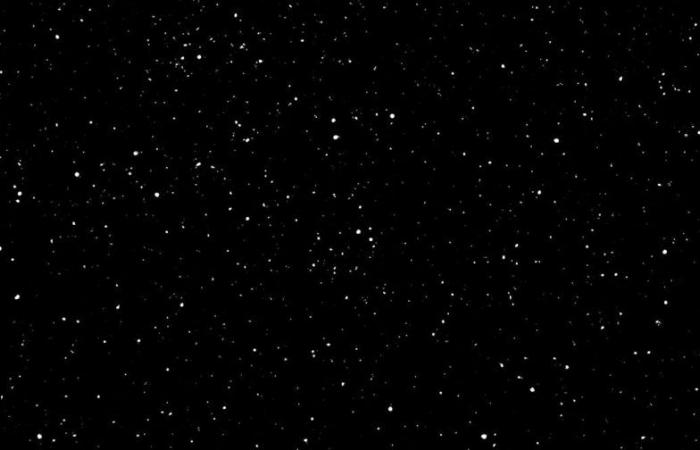There is nothing darker than the universe. Neither the abysses of the oceans, nor the Gothic, nor HP Lovecraft, nor Karl Lagerfeld’s black suit, nor the mouth of the wolf.
That of the universe is a darkness 93 billion light years in diameter. We live inside an unfathomable balloon filled fundamentally with a rarefied plasma, ionized hydrogen and helium. Enormous distances separate the sails: the galaxies.
What is the universe like? There is an elegant cosmological model that explains it. It is consistent with quantum mechanics, general relativity, and mostly agrees with current astronomical observations. The model dictates that observable matter is only 5% of the universe. An invisible, transparent matter that neither emits nor reflects light is 25%: dark matter. And the remaining 70% is an invisible force that would explain why the expansion of the universe over the last five billion years has accelerated faster than expected.
95% of the ingredients in the recipe are unknown. It is as if humanity did not know the flour in the cake.
“Too much darkness, isn’t it? They really are terms that refer to our ignorance,” writes Ignacio Trujillo Cabrera, from the IAC, in an article that explains what the universe is like.
But what is obscured now is the invisible.
Despite the experiments carried out to date, it has not been possible to find a candidate particle for dark matter and scientists are increasingly considering the possibility that it is not what they have reported until now. It is a colossal uncertainty about the uncertain.
“Has the time come to consider that dark matter does not exist?” asked Bárbara Álvarez González, a physicist at the University of Oviedo. The idea that we are not understanding gravity well and that dark matter does not exist has been around for many years and is resurrected from time to time, but it does not solve all the problems. With dark matter it happens like with old photo albums when moving, it is not so easy to get rid of it.
Far from not existing, it may be a hidden side of the universe with a rich inner life.
“We could think of dark matter as quantum particles that exhibit typical wave behaviors. The smaller these particles are, the larger the wave they describe. Since we are talking about very, very, very small particles, inconceivably small, their length could be as large as a galaxy,” explains Mireia Montes, from the IAC, in her article on Nube, a small and diffuse galaxy that could be a very beautiful exhibition of quantum mechanics in nature on a cosmic scale.
Javier Román García, from the University of La Laguna, writes about the discovery of a gigantic current, a river, like the Nile or the Orinoco, but of stars, which they have discovered in the Coma galaxy cluster. The Giant Coma Current is a bridge to the secrets of dark matter, proposes Román García, and the best hypothesis predicts that dark matter is grouped into balls or halos, instead of being a substance that homogeneously permeates space. The black billiard balls.
Regarding dark energy, which accounts for most of the cosmos, we are experiencing a sidereal stir. The universe is in the hands of dark energy, explains Eusebio Sánchez Álvaro, from CIEMAT, and we do not know what it is.
There was consensus. For decades it has been accepted that the best possible description of dark energy is a cosmological constant. Its momentum causes distant galaxies to move away faster than nearby ones, and this is exactly what we would expect to see in a universe that was expanding everywhere in the same way.
But after relatively recent measurements and astronomical calculations, scientists do not agree on its exact value. It is what is known as the Hubble Tension, a passionate schism that permeates everything.
Adam Riess, physicist and Nobel Prize winner, explained that the measurements made with the observations of the James Webb Space Telescope (JWST), which he has led, reveal a decades-long blindness:
“Once measurement errors are eliminated, what remains is the real and exciting possibility that we have misinterpreted the universe.”
And this is how we have entered the most burning darkness.






